[SPAIN] Seville Travel Recommendation

Seville is the last city I visited in Spain. This sun-soaked city in Southern Spain is home of Flamenco dance. The city is also known for its rich history and stunning architecture such as the Royal Alcazar, Seville Cathedral and Plaza de Espana.
Getting in:
By train:I arrived in Seville by train from Cordoba and left Seville by plane. Sevilla Santa Justa Station is Seville's main train station. The train station is less than 2km from the city centre.
By plane: The EA bus line ("Especial Aeropuerto") is the only bus line that connects Seville Airport with Plaza de Armas in the city of Seville. It runs daily all year. The journey usually takes 35 minutes. One way ticket cost EUR 4 and round trip on same day cost EUR 6.
Getting around:
Seville is very well connected by public transport including metro, tram and bus. However, it is possible to visit the main attractions on foot like I did but it is a bit tiring if you want to cover all the attractions. Photo above is the tram stop near the Seville Cathedral. There are also many horse drawn carriage if you want to ride one.
Accommodation:
I chose to stay at Pension Montorena which is not too far from the Sevilla Santa Justa and within walking distance to the main attractions in the city.
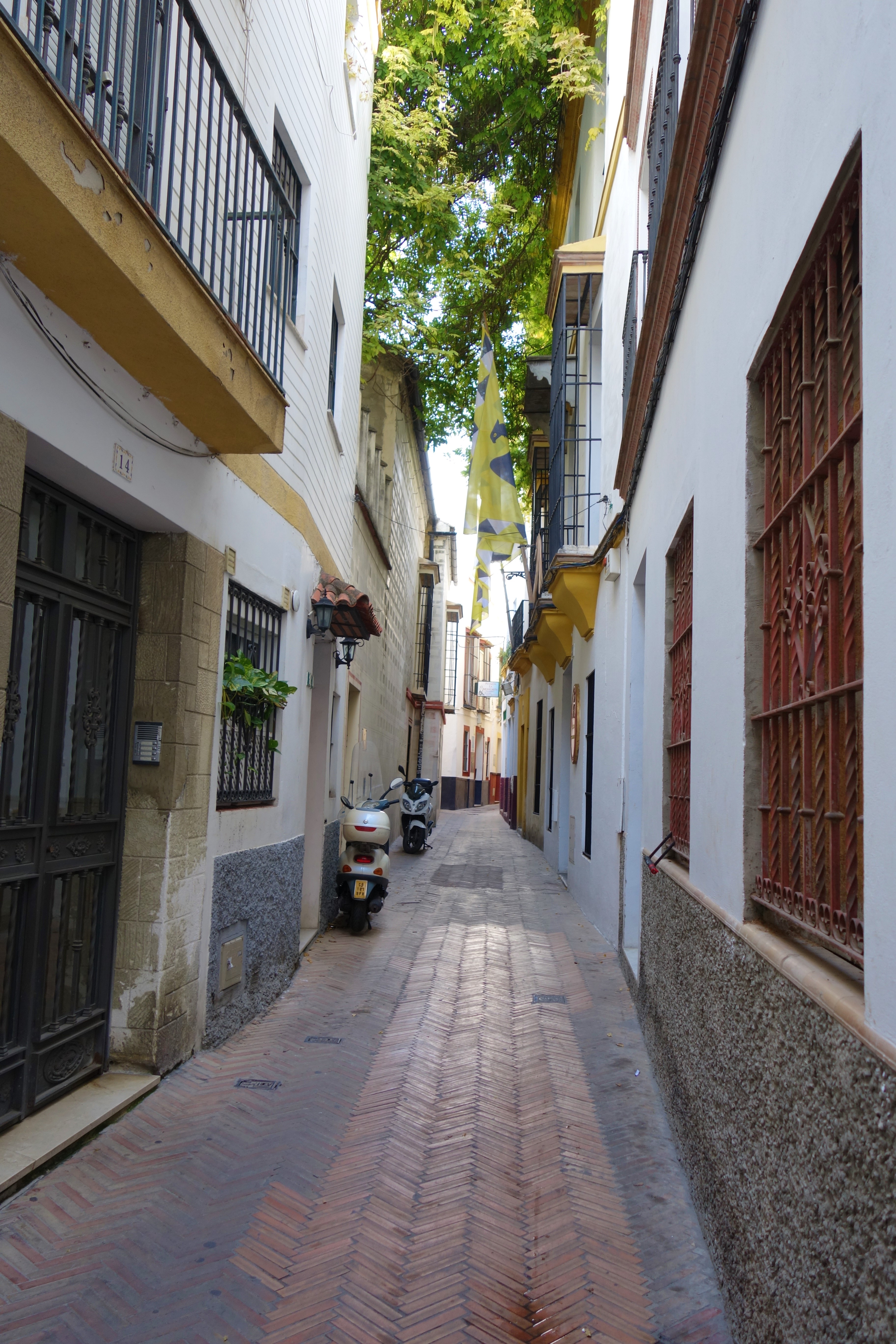
It is hidden in a small alley near the Acueducto romano de los Caños de Carmona. There is no lift. A night stay cost me EUR 51. You may book here: http://www.hostalmontorena.com/
My itinerary in Seville:
Map above shows the location of attractions in Seville. The Guadalquivir River divided the city into two halves: Sevilla and Triana. The attractions are located on Sevilla, east bank of the river. The blue box is Sevilla Santa Justa and the orange box is where I stayed. (Click to see larger map)
Day 1: arrived in Seville during noon -> Acueducto romano de los Caños de Carmona -> check in -> Seville Cathedral -> Archivo de Indias (exterior only) -> Torre de Oro (exterior only) -> Palacio de San Telmo (exterior only) -> University of Seville (exterior only) -> Plaza de Espana -> Royal Alcazar of Seville -> Plaza Nueva -. Church of the Divine Salvador (exterior only)
Day 2: Setas de Sevilla / Mercado de la Encarnacion -> Casa de la Memoria -> Alameda de Hercules -> Puerta de la Macarena & Basilica de la Macarena -> Walls of Seville -> leaving Seville at noon
What to see:
1) Seville Cathedral
Seville Cathedral is one of the world's largest church. This cathedral is the final resting place of Christopher Columbus. You can climb the La Giralda (previously the minaret of the Great Mosque and now the bell tower of the cathedral) to see the panoramic view of the city. It is a UNESCO World Heritage Site with Royal Alcazar of Seville and Archivo de Indias.
The tomb of Christopher Columbus is adorned with a bronze coffin, carried by four figures symbolizing the kingdoms of Castile, Leon, Aragon and Navare.
There is a mirror in the cathedral which allows visitors to see the beautiful ceiling without looking up.

One of the beautiful inner courtyard in the cathedral.
Antecabildo has sculptures and reliefs which shows The Virties and some scene from the Apocalipse and other Sacred Books. Every scenes has its own latin comments.
The treasure room display many valuables such as this intricate crown.
View from the Giralda tower.
Admission fee:
Cathedral, Giralda tower & Salvador Church: EUR 10 (adult), EUR 5 (student/age>65), add EUR 5 for audio guide
Guided tour to Cathedral & Giralda: EUR 16
Guided tour to the roof: EUR 16
Only Salvador Church: EUR 5(adult)
Opening hours: 10.45am-6.30pm (Mon-Sat), 2.30pm-6.30pm (Sun)
Website: https://www.catedraldesevilla.es/
* Price at the ticket office have a surcharge of 10%, so book online if you can
2) Archivo de Indias
Archivo de Indias housed in the ancient merchant's exchange of Seville was registered in 1987 by UNESCO as a World Heritage Site together with the adjoining Seville Cathedral and Royal Alcazar of Seville.
3) Torre del Oro
Torre del Oro ("Tower of God") is a 12th century tower located besides the Guadalquivir River. It was part of the Moorish city wall. It once served as a storage place for gold and as a prison. Today it houses a small maritime museum.
Admission fee: EUR 3 (adult), EUR 1.50 (student/age>65/age 6-14), free for child under age 6, free on Mondays
Opening hours: 9.30am - 6.45pm (Mon - Fri), 10.30am-6.45pm (Sat & Sun)
4) Palacio de San Telmo
Palacio de San Telmo is an impressive building which is currently the seat of regional government.
5) University of Seville
Passed by University of Seville. It was a former tobacco factory. The building was complete with moat and watchtowers, which is evidence of the importance given to protect the King's lucrative tobacco monopoly.
6) Plaza de Espana

Plaza de Espana is the most famous and beautiful square in Seville. It is located next to the Maria-Luisa Park. It was designed by the great Seville architect, Anibal Gonzalez for the Ibero-American Expo of 1929.

The large fountain in the middle of the square.
One can rent a boat and sail through the 515 meters long canal at the square. You can reach this square by taking a metro to Prado de San Sebastian (line 1).
7) Royal Alcazar of Seville
Royal Alcazar of Seville is a royal palace built for the Christian king Peter of Castile. It is a UNESCO World Heritage Site with Seville Cathedral and Archivo de Indias. The Palace has different styles from Mudejar to Gothic and Rennaisance.
Gate of the Lion is the main entrance to the Alcazar. I took this photograph after the Alcazar was closed when it was virtually empty. There is usually a line of people waiting to get in.
Patio de la Monteria courtyard.
The Admiral's Hall.
The Levies Courtyard.
The Maidens Courtyard was the center of the public area of King Peter I Palace. The central part was covered with marble slabs, with a Renaissance fountain of almost 500 years.

The bottom walls of gallery surrounding the Maidens Courtyard are decorated with colourful ceramics, following the 'alicatado' technique.
The ceiling of Hall of Ambassador.
The Gothic Palace was built by Alfonso X "The Wise"(1252-1284). The Palace consists of two rectangular rooms, lying parallel to each other, and two smaller rooms placed across them at each end.
Exit of the Alcazar.
Admission fee: EUR 13.50 (adult), EUR 6 (student/age >65)
* Free to enter on Mondays 6pm and 6.30pm
** Tickets bought online has an additional cost of EUR 1
Opening hours: 9.30am-5pm (Oct-Mar), 9.30am-7pm (Apr-Sep)
Website: https://www.alcazarsevilla.org/noticias/english-version/
8) Plaza Nueva
Plaza Nueva is a square where the city hall is. In the center of the plaza is a statue of Fernando III who conquered Seville for the Christians in 1248.
9) Church of the Divine Salvador
Church of the Divine Salvador was built on the site of a basilica in Roman times and a mosque during the Moorish period. It is the largest church after the Seville Cathedral. Unfortunately it wasn't open during my visit as it is closed on Mondays.
Admission fee: Only Salvador Church: EUR 5(adult)
* If you visited Seville Cathedral, you can use the same ticket to visit this church.
Opening hours: 10am-2.30pm (Tue-Sat)
Website: https://www.catedraldesevilla.es/iglesia-de-el-salvador/
10) Setas de Sevilla
Setas de Sevilla ("mushrooms of Seville" in Spanish) was opened in 2011. It was designed by the German architect, Jurgen Mayer. It is the largest wooden construction in the world. There is a special walkway and a terrace on top of the parasols.
Mercado de la Encarnacion is the market which is located below the Metropol Parasol. You can visit the antiquarium, an archaeological museum which shows the remnants of a Roman colony with a fee.
Admission fee: EUR 2 (adult), free for child age below 16
Opening hours: 10am-8pm (Tue-Sat) and 10am-2pm (Sun)
Website: https://www.casadelamemoria.es/en/
12) Casa de la Memoria
Casa de la Memoria is a cultural centre and museum of Flamenco art. Every evening, visitors can watch the flamenco show. However, children under age 6 are not allowed.
Admission fee: EUR 22 (adult), EUR 18 (student), EUR 12 (child age 6-11)
Show schedule: 7.30pm-8.30pm and 9pm-10pm
Website: https://www.casadelamemoria.es/en/
13) Alameda de Hercules
Alameda de Hercules is a garden square which has a few Roman columns. It was the oldest public garden in Spain and Europe.
14) Puerta de la Macarena
The bright yellow Puerta de la Macarena is one of the three city gates that remain today of the original wall of Seville. The equally striking Basilica de la Macarena is located at the right of the gate.
16) Walls of Seville
Walls of Seville were built in the time of Julius Caesar surrounding the Old Town of Seville. The walls remained intact until the 19th century when they were partially demolished after the revolution of 1868. The walls from Puerta de la Macarena to Puerta de Cordoba is the best preserved section.
With that, Seville marked my stop in Spain. I hope this posting will help you in planning a trip to Seville.







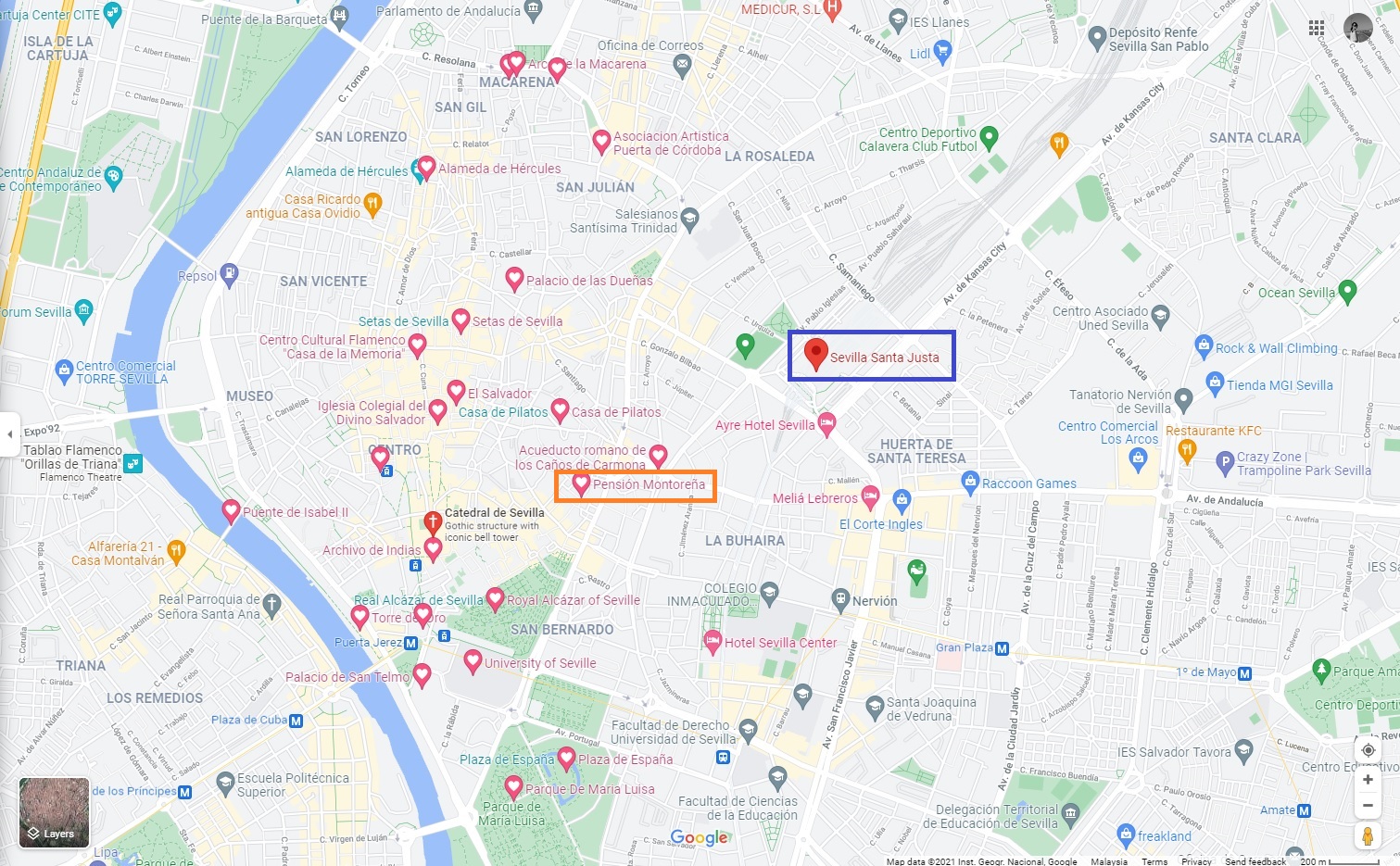




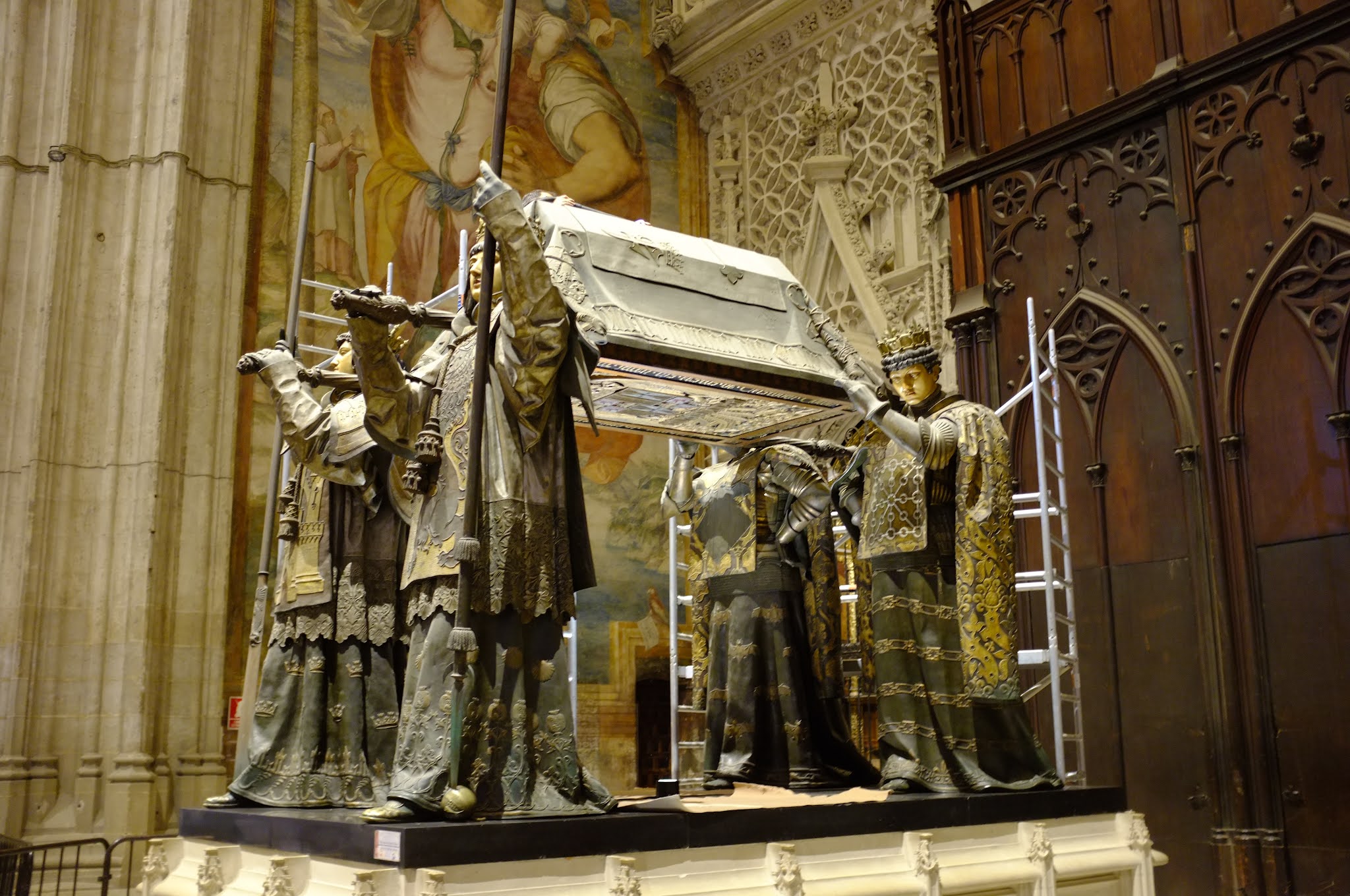









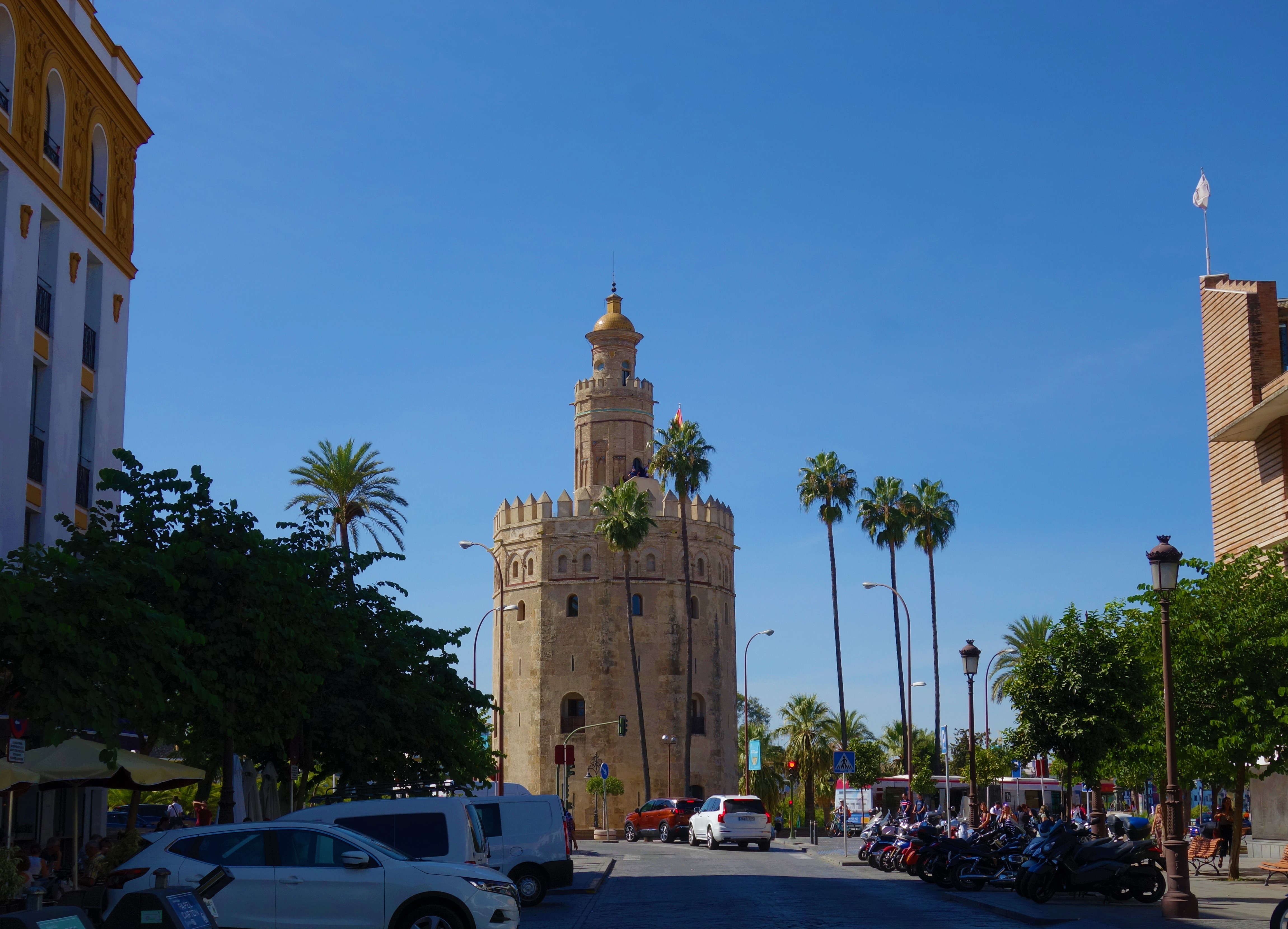

































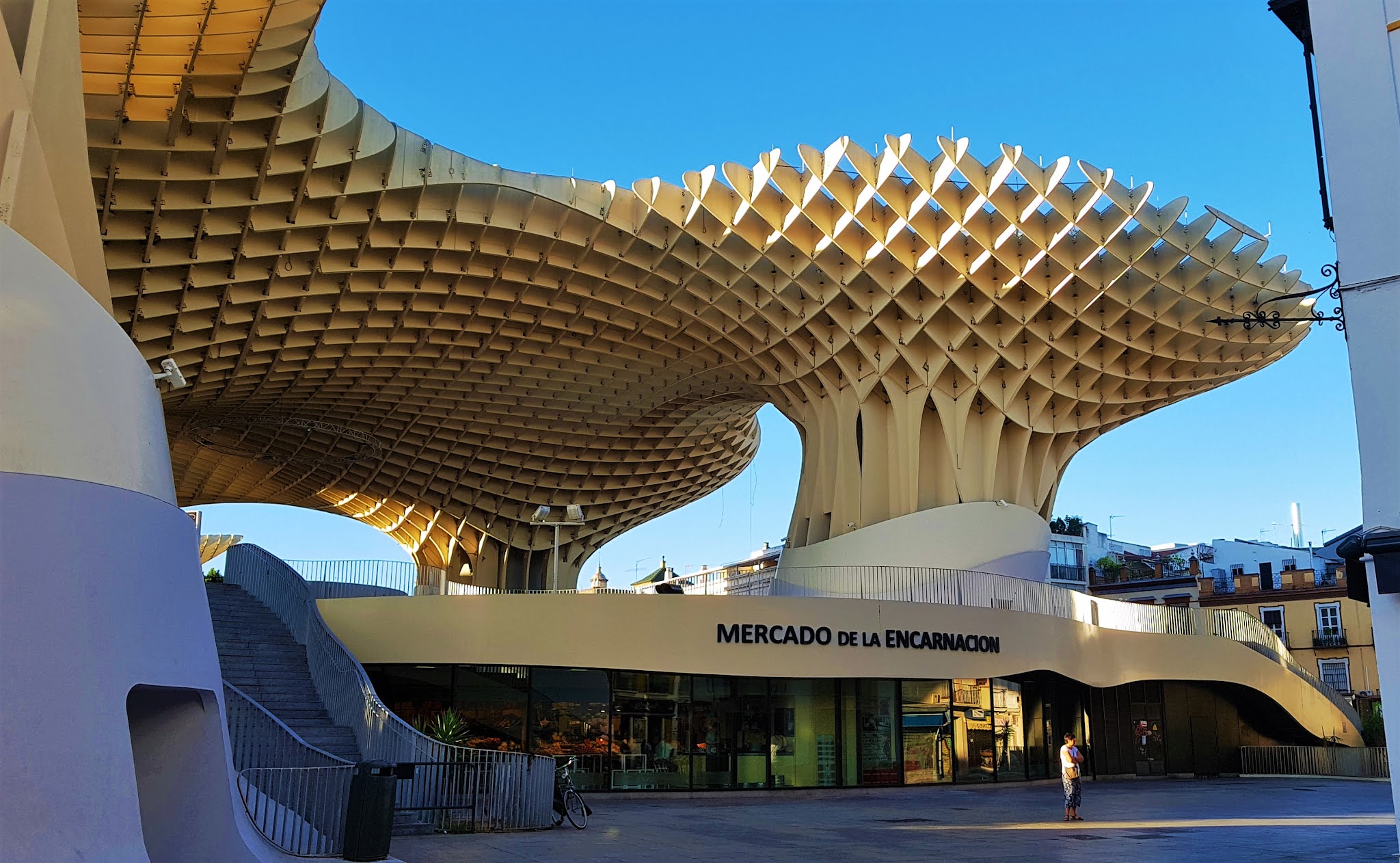









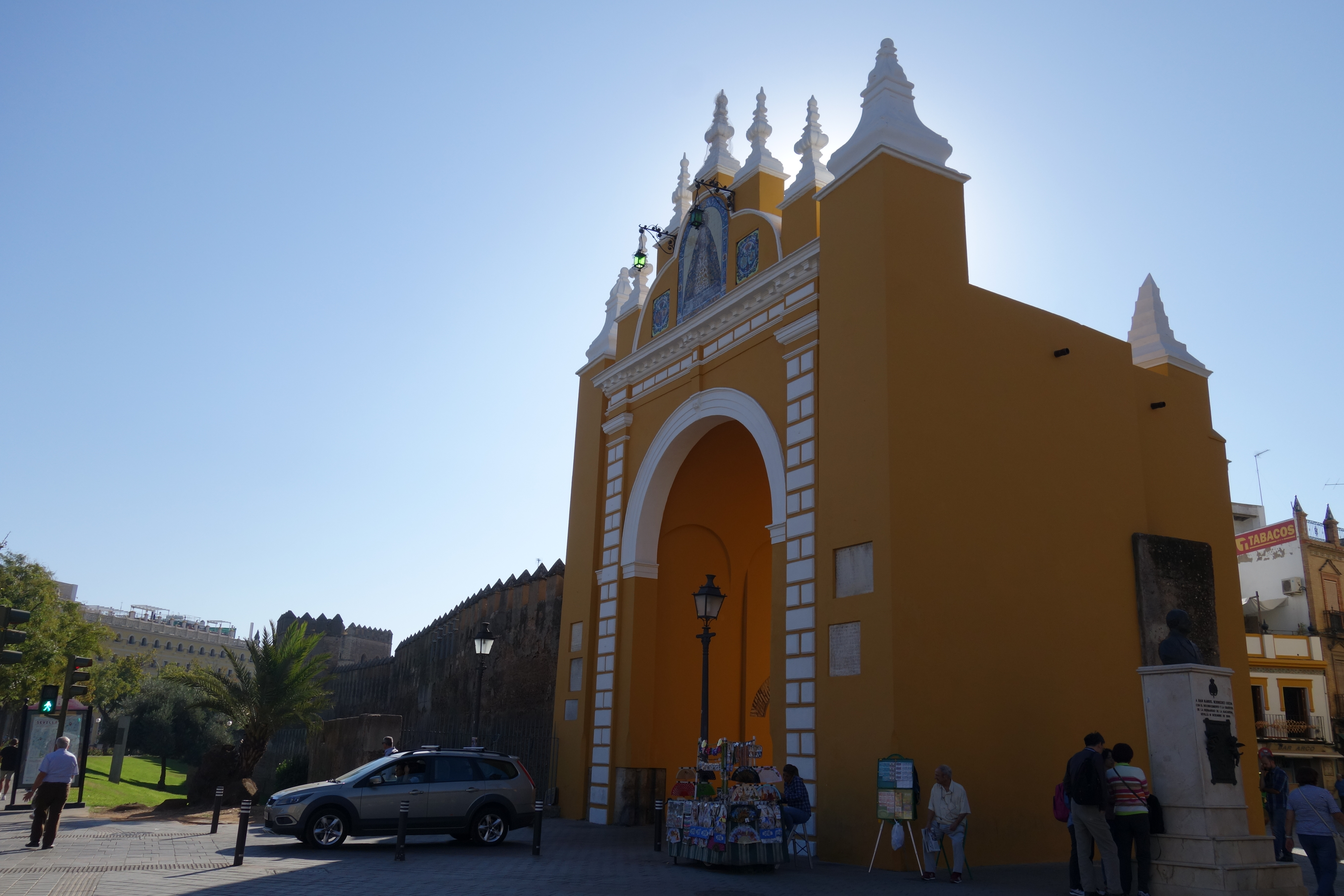





![[MALAYSIA] How To Do A Self Guided Walking Tour in Kota Kinabalu](https://blogger.googleusercontent.com/img/b/R29vZ2xl/AVvXsEgR_cJjX4Shl9rsz0ufzxjmtLMq5PAvmTNDHypSVV2CYDaarZVj8EMznRkXqdVeCGg2yEMdFqPtI5rvrmMtJVSL1W9jqOtdCM2EFAc5ZTWn7XzPQV5sqS4s1DO0T_AuF0nq_dLQ53b9-ju3yyLJUrvU2TlhbmD4rDDV5-aPFaT2WEQZ1c257JXGUhyfsw/s72-c/20220524_131141.jpg)
![[FRANCE] My Favourite Paris Eiffel Tower Photo Spots](https://blogger.googleusercontent.com/img/b/R29vZ2xl/AVvXsEi220KHLfBDpyO53KorHwAb0KQEuiiaVDlrFYwEEAvs8YvKb-Edmyt7Hl7rZszN6qc-GM4e3SmjBS2pUiCiv8ljl8mnrUR93Ljxb0xGrSZ4sZLPRErpbAj29btKvnIC67xV93iKnrH3QRcc/s72-w781-c-h505/DSCF4372.JPG)
![[JAPAN] Osaka Universal Studio](https://blogger.googleusercontent.com/img/b/R29vZ2xl/AVvXsEilW88BKY24KkvC4WjRfTktmxFmylxMsDD8emYT93x8bOlgqzMV1feAp28Si_GPn3hyFD2E97CMmP3X6kceDfFa9WB_7qr2BFvmu20iVJRaNlZd1BfoyUUj5ZgofOgK5lZGoqVDS4-1YLTo/s72-c/?imgmax=800)



![[MONACO] How To Visit Monaco In One Day From Nice](https://blogger.googleusercontent.com/img/b/R29vZ2xl/AVvXsEgZkJeVAOmz4LTRwY2uDTK131UJVUWH_44GUUU3H-ni63dK2BlNqITBIh5Tdcpz9kXTUb7ePW7f-PQ1Y7E6B4lnqKEHs_nL3Eop-ouoFhxayMI4lNCcUG-oJnGMVwpGDlBu8lfgn10H_QHw/s72-c/DSC06605.JPG)
![[MOROCCO] My Day Trip to Blue City of Chefchaouen From Fez](https://blogger.googleusercontent.com/img/b/R29vZ2xl/AVvXsEh-7PIqgkIbF1BtTIOwfZ2R611OUrvV7f4Uxih57is62V_QD_DySCdifgR250MMruySrRmV7UMQ14iRsQZ6ifAaAWTqYacWSu__Lpm6QuqEjUcMZ4IJz-0SLDKeCV-nn6Zk1qbyMtMaZf4YupMArl4gXmmXoQUxHc6T-_eW-X2jvjh47rlu4Ddq4_Q48g/s72-c/DSC07946.JPG)
0 comments: